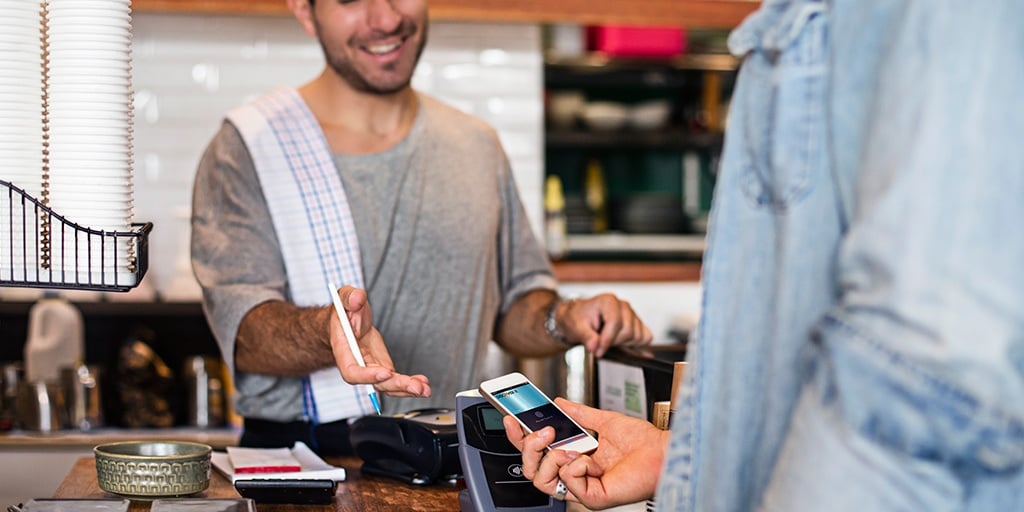|
For each, discovering new ways to add value for consumers to achieve repeat-use cases is fundamental for retention. Because one thing is for certain: As consumers continue to adopt mobile payments, adding new value for those consumers will be key. Reap Benefits |
|
Digital wallets often offer substantial benefits and rewards for consumers. Many major players in the digital wallet space host their own rewards programs, offering everything from cash back to gift cards for purchases. In fact, such programs are popular among consumers. According to a recent survey of U.S. consumers commissioned by Discover® Global Network, 69 percent of respondents said that they use mobile coupons at the counter for in-store purchases, and 69 percent of respondents said they use reward program apps to collect and redeem points.1 When asked which factors were most important to them in a mobile payment app, the most popular perk, at 23 percent, was the ability to store coupons, loyalty cards or deals.1 |
|
Several major U.S. banks are also now offering bonus points in their branded credit card programs for making digital wallet purchases, further incentivizing their usage. As device manufacturers also continue to integrate digital wallets, we should expect to see additional rewards programs flourish. Personalize It Making the shopping experience more personalized is another way in which retailers and payment networks can add value for consumers in the sphere of emerging payment technologies. As cross- channel communication becomes more powerful in the payment technology space (including successfully translating online experiences to offline experiences and vice versa), consumers can receive information that is tailored to their needs, if they choose to opt into your brand communications. An example includes connecting with consumers through a branded app during the time of day they might typically purchase a particular product; and offer them similar, personalized recommendations based on their past purchases and other available data. |
|
Offering consumers what they want before they even know it and keeping ahead of similar trends can keep retailers and payment networks connected on an even deeper level to the unique needs of each consumer. Artificial intelligence (AI) will also continue to assist in understanding consumer behavior. The ability to effectively use AI (including chat bots and predictive data) to create an omni-channel experience based on consumer behavior will play an important role. Reward Behavior Retailers' partnerships with payment networks can also offer consumers a more seamless and rewarding experience. Imagine purchasing your triple-shot, almond milk latte at your favorite coffee retailer every morning using your mobile payment app. Your coffee retailer's loyalty program, in sync with the payment app, recognizes that you usually skip your regular morning order every other Thursday. Intuitive technology will notice this particular pattern of attendance and personalize an offer ahead of time, perhaps offering a dollar off, or double points in the loyalty program, for the consumer's potential purchase—redeemable only on that particular day. Such loyalty programs may become entirely digital in the future, and punch-cards in an ever-thickening physical wallet could become a thing of the past. Security Matters Digital payments provide new anti-fraud security measures that can help protect consumer credentials and payments information. However, U.S. consumers have cited a lack of confidence in the security of mobile payment methods as a primary reason for not using mobile payments.2 This perception on digital payments security presents opportunity for retailers to educate their consumers. Because what consumers see are reports on high-profile data breaches; what they don’t see are how seamless integrated anti-fraud security measures have become more effective. |
Payment tokens are one example. What consumers may not realize is that their credit and debit card numbers are not stored in their digital wallet. Instead, a unique number is assigned, encrypted and stored on the device. Each transaction, then, is authorized with a one-time unique security code. If compromised, the payment token automatically flips and is rendered useless to fraudsters.
With new and emerging payment technologies comes enhanced consumer convenience. Value-added services and programs for consumers will become more and more meaningfully integrated, and creating a purposeful and worthwhile experience for consumers will continue to be a main driver of retention.
References
1 “Mobile Commerce Readiness: A merchant and consumer perspective,” 451 Research, February 2017.
2 “The State of Digital and Mobile Commerce,” Mercator Advisory Group, May 2017.
The information provided herein is sponsored by Discover Global Network. It is intended for informational purposes, and is not intended as a substitute for professional advice.










 Facebook
Facebook Twitter
Twitter LinkedIn
LinkedIn Youtube
Youtube Glassdoor
Glassdoor